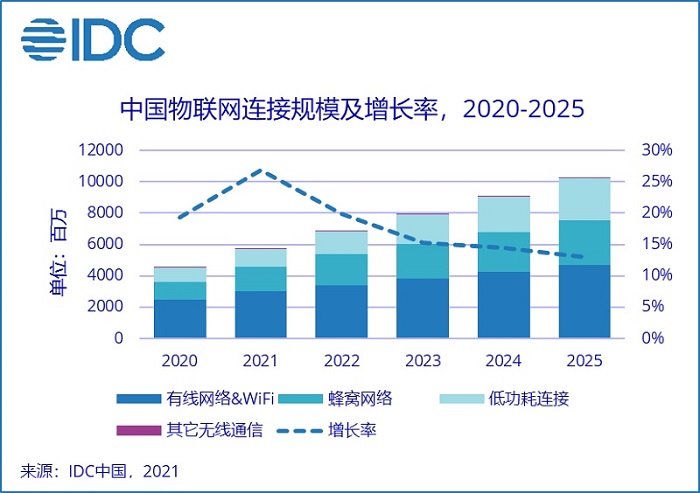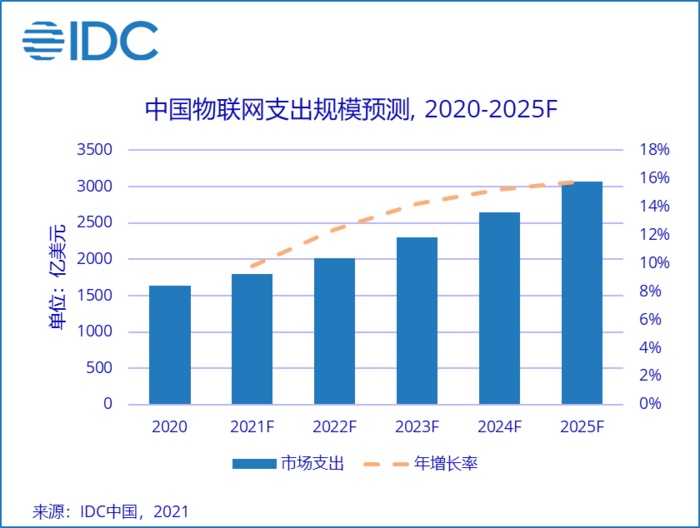Although the growth rate of China’s IoT market has slowed down in 2020, in non-contact application scenarios, the Internet of Things plays an important role and has developed rapidly. Recently, IDC released the latest report stating that by the end of 2020, China’s Internet of Things IP connections will reach 4.53 billion; from 2020 to 2025, the compound annual growth rate of China’s Internet of Things IP connections is expected to reach 17.8%, and by 2025, the total number of connections will reach 10.27 billion, and will account for 84% of the total connections in Asia Pacific (excluding Japan).

In terms of connection technology, wired and WiFi account for the highest proportion of all types of connections, but low-power connections are growing faster. The number of wired and WiFi connections reached 2.49 billion in 2020, accounting for 55.1% of the total connections, and is expected to reach 4.68 billion by 2025.
The report points out that in many scenarios such as video surveillance, industrial IoT, and smart homes, wired and WiFi will still occupy an important proportion. The number of cellular connections reached 1.14 billion in 2020. Due to the large-scale coverage of NB-IoT and 5G networks and the rapid popularity of downstream scenario applications, cellular connections will maintain rapid development in the future. In addition, the home and personal wearable fields of Bluetooth connections maintain rapid growth, driving low-power connections to maintain a compound annual growth rate of 25.1%.

In terms of industries, the consumer, professional service industry, transportation and other industries will maintain rapid growth. Among them, the consumer industry has the largest number of connections and the fastest growth rate. With its huge population, the consumer industry will have 2.04 billion connections in 2020, and is expected to have a compound annual growth rate of 23.1% from 2020 to 2025; the professional services industry is expected to maintain a compound annual growth rate of 17.2%; other aspects will have a compound annual growth rate of 23.1% from 2020 to 2025. The growth rate will also be above 10%. It is believed that China’s Internet of Things market will develop rapidly under the combined influence of consumer markets such as smart homes and personal wearables, as well as enterprise markets such as Internet of Vehicles, smart cities, and industrial Internet.
Mots-clés : Transmission de données dans le cadre de l'internet des objets